De Dietrich MS 24 MI VMC – страница 4
Инструкция к Водонагревателю De Dietrich MS 24 MI VMC
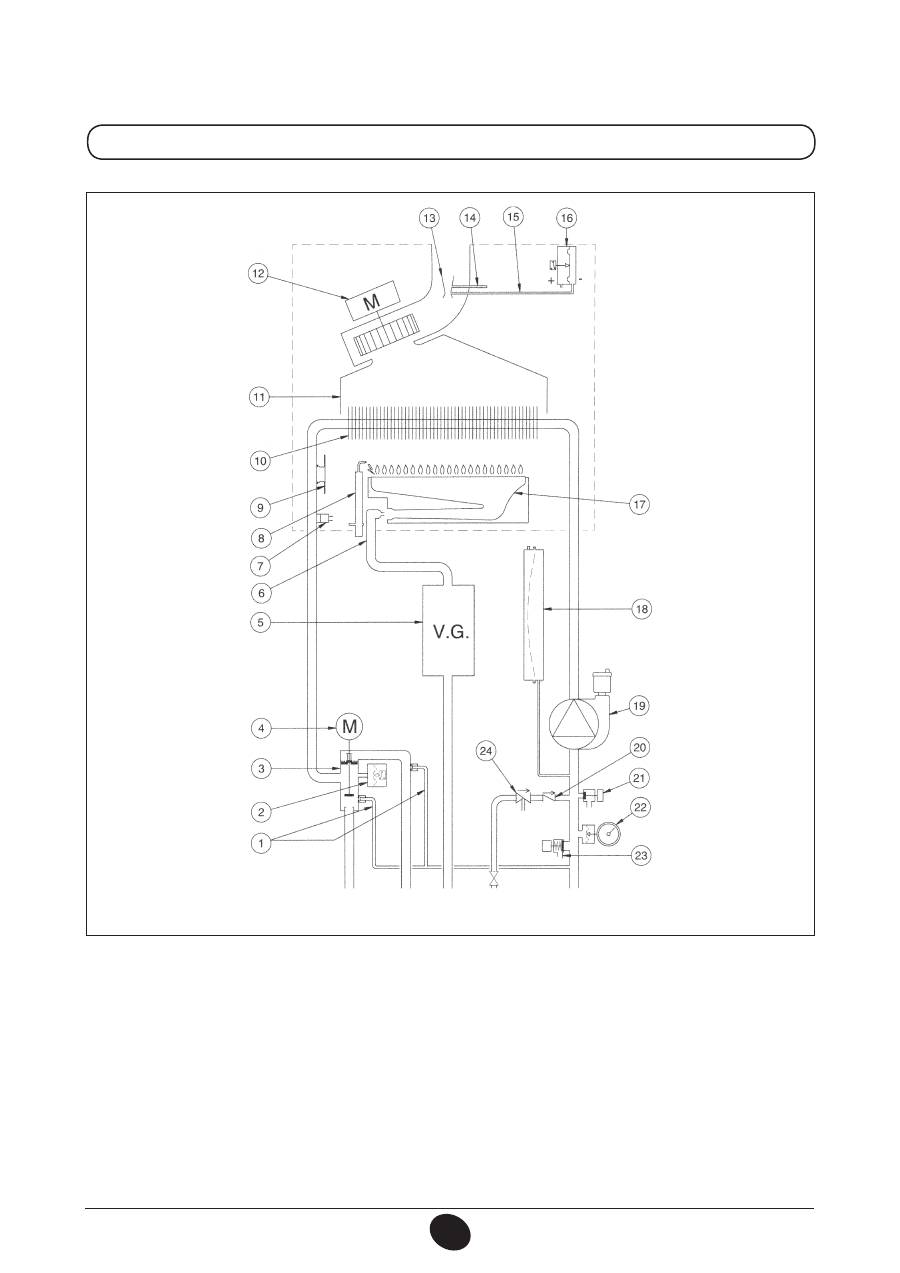
61
71.03982.03 - IT
ISTRUZIONI DESTINATE ALL’INSTALLATORE
24 FF
Legenda:
1
By-pass automatico con valvola di ritegno
2
Pressostato idraulico
3
Valvola tre vie
4
Motore valvola tre vie
5
Valvola gas con diaframma gas
6
Rampa gas con ugelli
7
Sonda NTC riscaldamento
8
Elettrodo di accensione / rivelazione fiamma
9
Termostato di sicurezza
10
Scambiatore acqua fumi
11
Convogliatore fumi
12
Ventilatore
13
Venturi
14
Presa di pressione positiva
15
Presa di pressione negativa
16
Pressostato aria
17
Bruciatore
18
Vaso espansione
19
Pompa con separatore d’aria
20
Valvola di non ritorno
21
Rubinetto di scarico caldaia
22
Manometro
23
Valvola di sicurezza
24
Disconnettore
Figura 19
Mandata
riscaldamento
Gas
Entrata
sanitario
Ritorno
riscaldamento
CG_2267 / 1006_2102
Mandata
bollitore
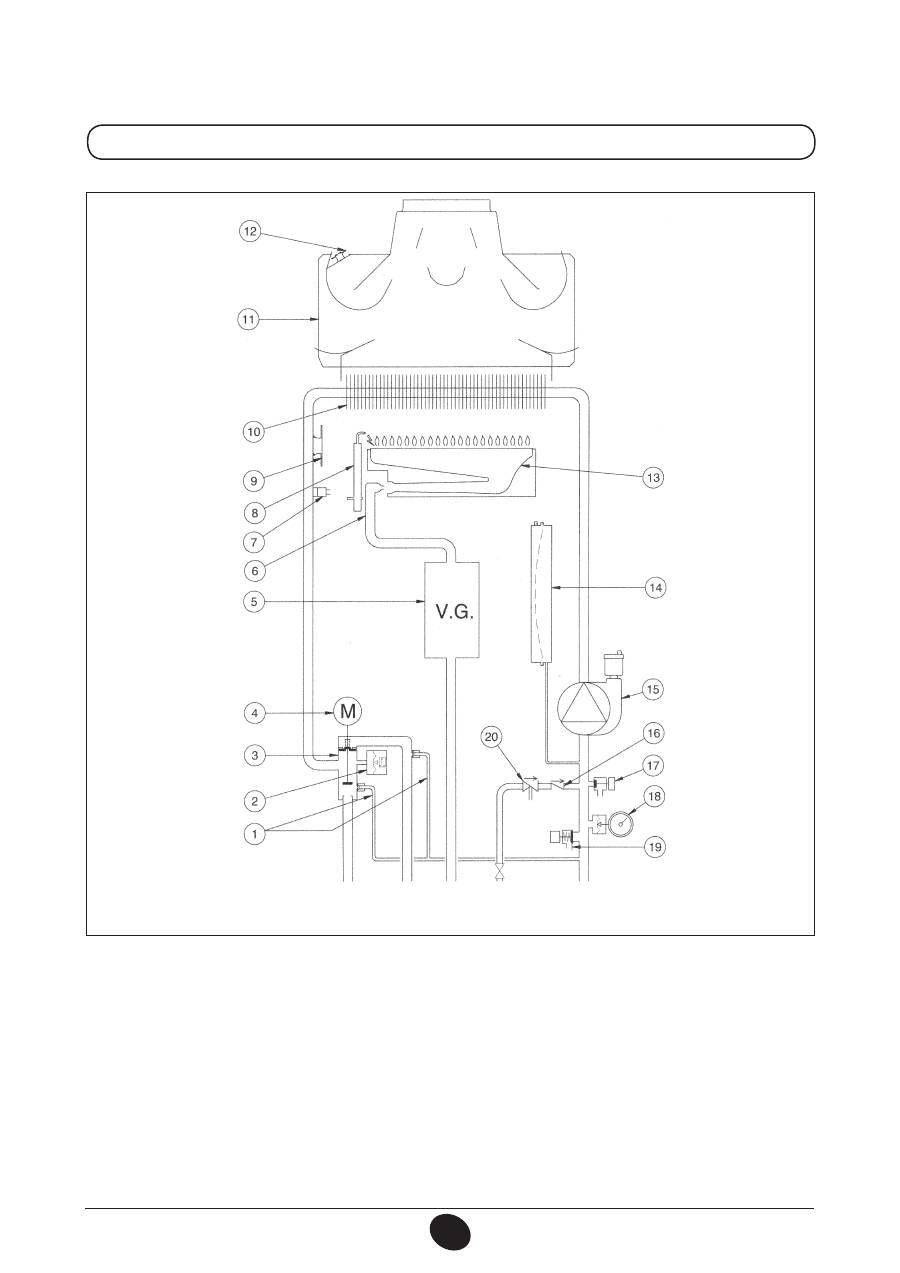
62
71.03982.03 - IT
ISTRUZIONI DESTINATE ALL’INSTALLATORE
24
Legenda:
1
By-pass automatico con valvola di ritegno
2
Pressostato idraulico
3
Valvola tre vie
4
Motore valvola tre vie
5
Valvola gas con diaframma gas
6
Rampa gas con ugelli
7
Sonda NTC riscaldamento
8
Elettrodo di accensione / rivelazione fiamma
9
Termostato di sicurezza
10
Scambiatore acqua fumi
11
Convogliatore fumi
12
Termostato fumi
13
Bruciatore
14
Vaso espansione
15
Pompa con separatore d’aria
16
Valvola di non ritorno
17
Rubinetto di scarico caldaia
18
Manometro
19
Valvola di sicurezza
20
Disconnettore
Figura 20
Mandata
riscaldamento
Gas
Entrata
sanitario
Ritorno
riscaldamento
CG_2268 / 1006_2103
Mandata
bollitore

63
71.03982.03 - IT
ISTRUZIONI DESTINATE ALL’INSTALLATORE
34. SCHEMA COLLEGAMENTO CONNETTORI
24 MI FF
CG_2075 / 1001_1806
Colore cavetti
C
= Celeste
M
= Marrone
N
= Nero
R
= Rosso
G/V
= Giallo/Verde
B
= Bianco
V
= Verde
ELETTRODO DI
RIVELAZIONE/ACCENSIONE
TERMOSTATO
VALVOLA TRE VIE
POMPA
VENTILATORE
SENSORE PRECEDENZA
SANITARIO
SONDA NTC SAN.
SONDA
ESTERNA
PRESSOSTATO IDRAULICO
TERMOSTATO DI
SICUREZZA
PRESSOSTATO ARIA
SONDA NTC RISC.
PROGRAMMAZIONE

64
71.03982.03 - IT
ISTRUZIONI DESTINATE ALL’INSTALLATORE
24 MI
CG_2076 / 1001_1807
Colore cavetti
C
= Celeste
M
= Marrone
N
= Nero
R
= Rosso
G/V
= Giallo/Verde
B
= Bianco
V
= Verde
ELETTRODO DI
RIVELAZIONE/ACCENSIONE
TERMOSTATO
VALVOLA TRE VIE
POMPA
SENSORE PRECEDENZA
SANITARIO
SONDA NTC SAN.
SONDA
ESTERNA
PRESSOSTATO IDRAULICO
TERMOSTATO DI
SICUREZZA
TERMOSTATO FUMI
SONDA NTC RISC.
PROGRAMMAZIONE
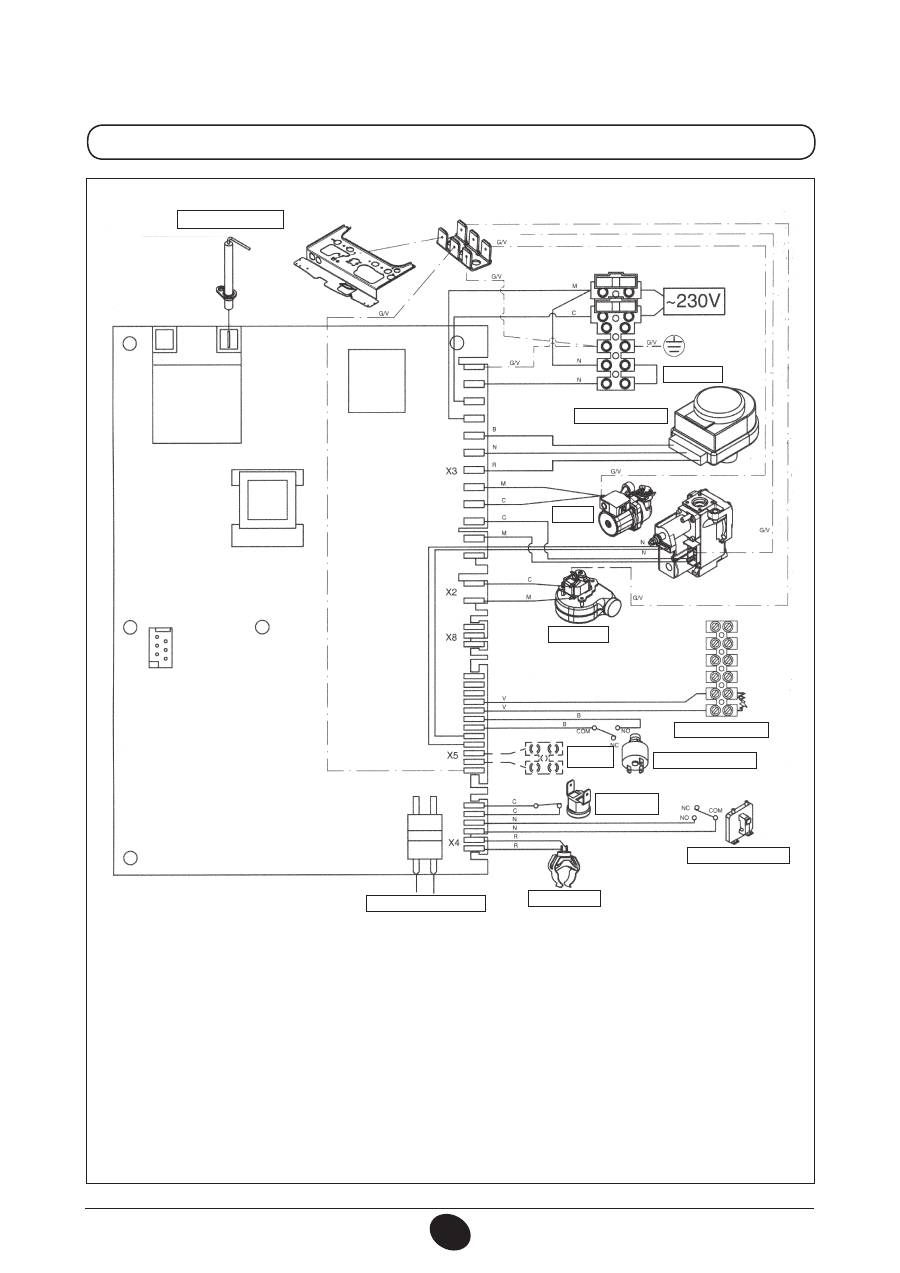
65
71.03982.03 - IT
ISTRUZIONI DESTINATE ALL’INSTALLATORE
24 FF
Colore cavetti
C
= Celeste
M
= Marrone
N
= Nero
R
= Rosso
G/V
= Giallo/Verde
B
= Bianco
V
= Verde
ELETTRODO DI
RIVELAZIONE/ACCENSIONE
TERMOSTATO
MORSETTIERA M2
POMPA
SONDA
ESTERNA
PRESSOSTATO IDRAULICO
TERMOSTATO DI
SICUREZZA
PRESSOSTATO ARIA
SONDA NTC RISC.
PROGRAMMAZIONE
VENTILATORE
CG_2271 / 1006_1603
VALVOLA TRE VIE

66
71.03982.03 - IT
ISTRUZIONI DESTINATE ALL’INSTALLATORE
24
Colore cavetti
C
= Celeste
M
= Marrone
N
= Nero
R
= Rosso
G/V
= Giallo/Verde
B
= Bianco
V
= Verde
ELETTRODO DI
RIVELAZIONE/ACCENSIONE
TERMOSTATO
MORSETTIERA M2
POMPA
SONDA
ESTERNA
PRESSOSTATO IDRAULICO
TERMOSTATO DI
SICUREZZA
TERMOSTATO FUMI
SONDA NTC RISC.
PROGRAMMAZIONE
CG_2272 / 1010_2101
VALVOLA TRE VIE
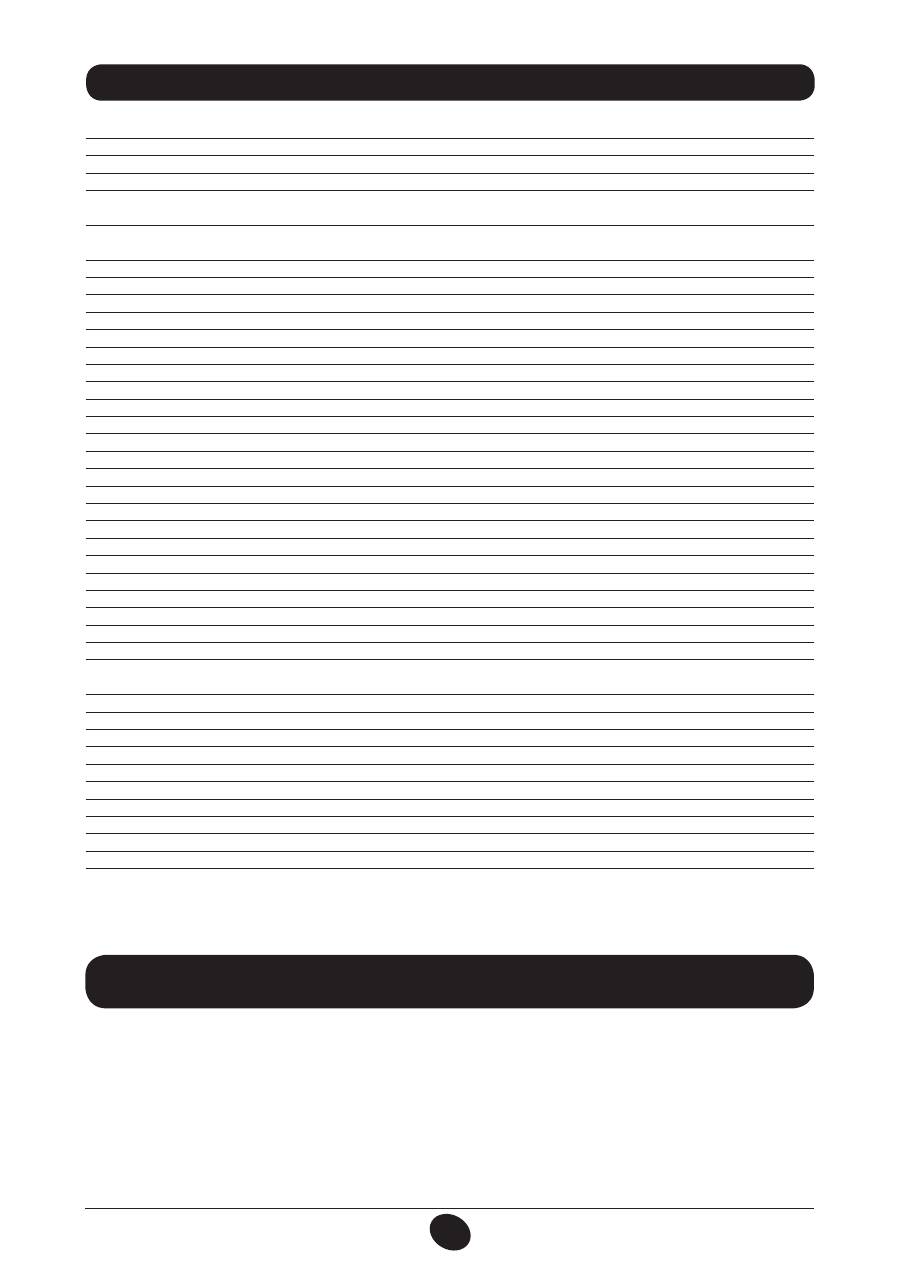
67
71.03982.03 - IT
ISTRUZIONI DESTINATE ALL’INSTALLATORE
35. CARATTERISTICHE TECNICHE
Modello MS
24 MI FF
24 FF
24 MI
24
Categoria
II
2H3P
II
2H3P
II
2H3P
II
2H3P
Portata termica nominale
kW
25,8
25,8
26,3
26,3
Portata termica ridotta
kW
10,6
10,6
10,6
10,6
Potenza termica nominale
kW
24
24
24
24
kcal/h
20.600 20.600 20.600 20.600
Potenza termica ridotta
kW
9,3
9,3
9,3
9,3
kcal/h
8.000 8.000 8.000 8.000
Rendimento secondo la direttiva 92/42/CEE
—
★★★
★★★
★★
★★
Pressione massima acqua circuito termico
bar
3
3
3
3
Capacità vaso espansione
l
6
6
6
6
Pressione del vaso d’espansione
bar
1
1
1
1
Pressione massima acqua circuito sanitario
bar
8
—
8
—
Pressione minima dinamica acqua circuito sanitario
bar
0,15
—
0,15
—
Portata minima acqua sanitaria
l/min
2,0
—
2,0
—
Produzione acqua sanitaria con
∆
T=25 °C
l/min
13,7
—
13,7
—
Produzione acqua sanitaria con
∆
T=35 °C
l/min
9,8
—
9,8
—
Portata specifica (*)
l/min
12
—
12
—
Range temperatura circuito di riscaldamento
°C
30/85
30/85
30/85
30/85
Range temperatura acqua sanitaria
°C
35/60
35/60***
35/60
35/60***
Tipo
—
C12-C32-C42-C52-C82-B22
B
11BS
B
11BS
Diametro condotto di scarico concentrico
mm
60
60
-
-
Diametro condotto di aspirazione concentrico
mm
100
100
-
-
Diametro condotto di scarico sdoppiato
mm
80
80
-
-
Diametro condotto di aspirazione sdoppiato
mm
80
80
-
-
Diametro condotto di scarico
mm
-
-
125
125
Portata massica fumi max
kg/s
0,014
0,014
0,020
0,020
Portata massica fumi min.
kg/s
0,014
0,014
0,018
0,018
Temperatura fumi max
°C
146
146
110
110
Temperatura fumi min.
°C
116
116
85
85
Classe NOx
—
3
3
3
3
Tipo di gas
—
G20
G20
G20
G20
—
G31 G31 G31 G31
Pressione di alimentazione gas metano
mbar
20
20
20
20
Pressione di alimentazione gas propano
mbar
37
37
37
37
Tensione di alimentazione elettrica
V
230
230
230
230
Frequenza di alimentazione elettrica
Hz
50
50
50
50
Potenza elettrica nominale
W
130
130
80
80
Peso netto
kg
33
32
29
28
Dimensioni
altezza
mm
730
730
730
730
larghezza
mm
400
400
400
400
profondità
mm
299
299
299
299
Grado di protezione contro l’umidità e la penetrazione dell’acqua (**)
IP X5D
IP X5D
IP X5D
IP X5D
(*) secondo EN 625
(**) secondo EN 60529
(***) con bollitore esterno
DE DIETRICH
,
nella costante azione di miglioramento dei prodotti, si riserva la possibilità di modificare i dati espressi in questa documentazione
in qualsiasi momento e senza preavviso. La presente documentazione è un supporto informativo e non considerabile come contratto nei
confronti di terzi.
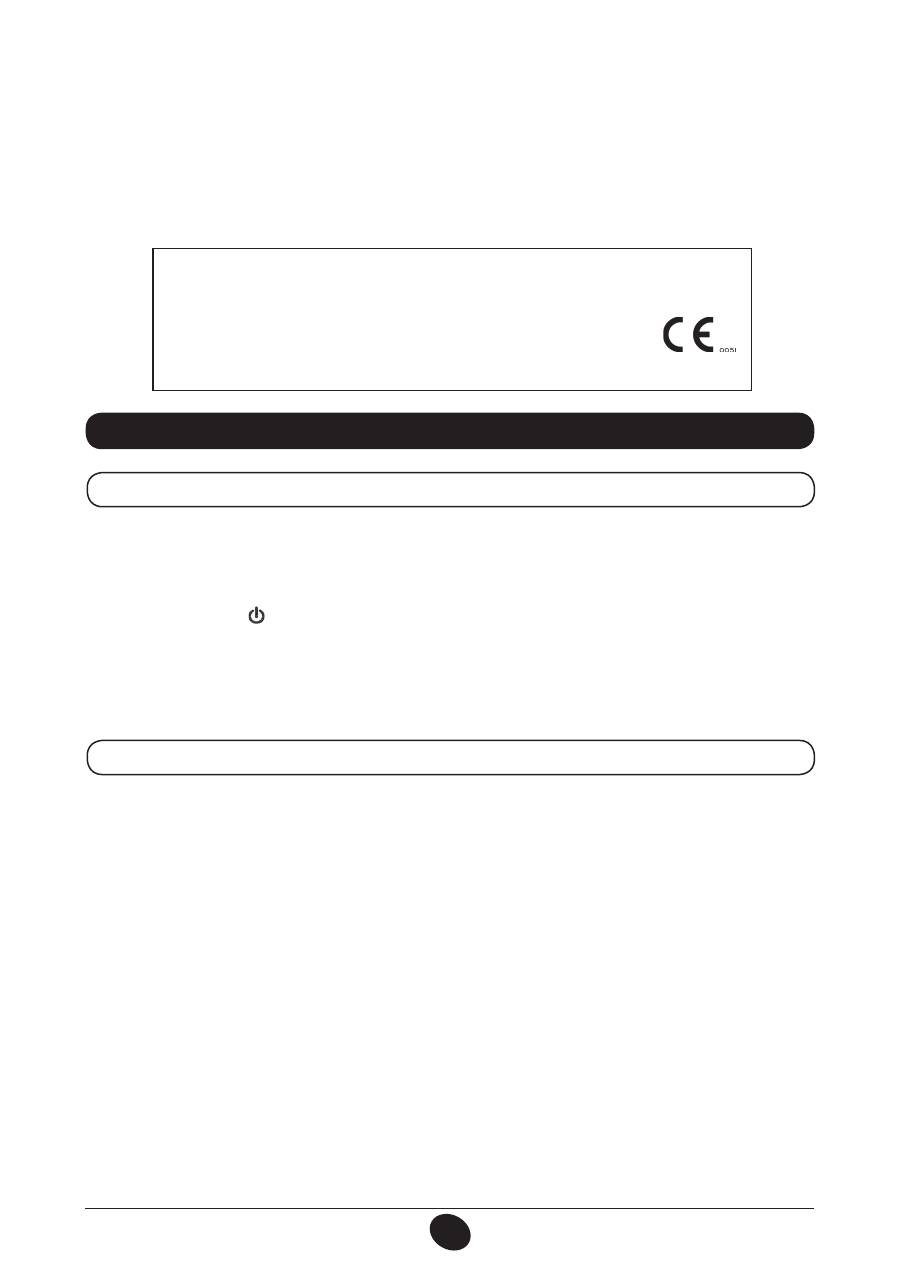
68
71.03982.03 - EN
OPERATING INSTRUCTIONS
Dear Customer,
We are confident your new boiler will meet all your requirements.
All
De Dietrich
products have been designed to give you what you are looking for: good performance
combined with simple and rational use.
Please do not put away this booklet without reading it first as it contains some useful information
which will help you to operate your boiler correctly and efficiently.
Do not leave any packaging (plastic bags, polystyrene, etc.) within the reach of children as they are a potential
source of danger.
1.
Instructions prior to installation
69
2.
Instructions prior to commissioning
69
3.
Commissioning the boiler
70
4.
Adjusting room and DHW temperatures
71
5.
Description of button (
) (Summer - Winter - Heating only - Off)
71
6.
Filling the system
72
7.
Turning off the boiler
72
8.
Gas conversion
72
9.
Prolonged shutdown. Frost protection (heating circuit)
73
10.
Troubleshooting 73
11.
Routine maintenance instructions
73
12.
General information
74
13.
Instructions prior to installation
74
14.
Installing the boiler
75
15.
Dimensions of boiler
76
16.
Installation of flue and air ducts
77
17.
Connecting the mains supply
81
18.
Connecting the room thermostat
81
19.
Gas conversion methods
82
20.
Visualisation of electronic board parameters on boiler display (“info” function)
84
21.
Parameter settings
85
22.
Adjustment and safety devices
85
23.
Positioning the ignition and flame-sensor electrode
86
24.
Checking combustion parameters
87
25.
Output/pump head performance
87
26.
Connecting the external probe
88
27.
Connecting an external storage boiler
88
28.
Annual servicing
89
29.
Draining the heating circuit
89
30.
Cleaning the filters
90
31.
Removing scale from the DHW circuit
90
32.
Dismounting the water-water heat exchanger
91
33.
Circuit diagram
92
34.
Illustrated wiring diagram
96
35.
Technical data
100
CONTENTS
INSTRUCTIONS FOR USERS
INSTRUCTIONS FOR FITTERS
De Dietrich
declares that these models of boiler bear the CE mark in compliance
with the basic requirements of the following Directives:
- Gas directive 2009/142/EC
- Efficiency Directive 92/42/EEC
- Electromagnetic Compatibility Directive 2004/108/EC
- Low Voltage Directive 2006/95/EC

69
71.03982.03 - EN
OPERATING INSTRUCTIONS
This boiler has been designed to heat water to a temperature lower than boiling point at atmospheric pressure. It must
be connected to a central heating system and to a domestic hot water supply system according to its performance and
power output.
Before having the boiler installed by a qualified fitter, make sure the following operations are performed:
a) Make sure that the boiler is adjusted to use the type of gas delivered by the gas supply. To do this, check the markings
on the packaging and the rating plate on the appliance.
b) Make sure that the flue terminal draft is appropriate, that the terminal is not obstructed and that no exhaust gases
from other appliances are expelled through the same flue duct, unless the latter has been specially designed to collect
exhaust gas from more than one appliance, in compliance with current laws and regulations.
c) Make sure that, if the boiler is connected to existing flue ducts, these have been thoroughly cleaned as residual products
of combustion may detach from the walls during operation and obstruct the flow of fumes.
d) To ensure correct operation and maintain the warranty, observe the following precautions:
1. DHW circuit:
1.1.
If the water is harder than 20 °F (1 °F = 10 mg calcium carbonate per litre of water), install a polyphosphate
dispenser or an equivalent treatment system, compliant with current regulations.
1.2.
Thoroughly flush the system after installation of the appliance and before use.
1.3.
The materials used for the product’s DHW circuit comply with Directive 98/83/CE.
2. Heating circuit
2.1. new system
Before proceeding with installation of the boiler, the system must be cleaned and flushed to eliminate residual
thread-cutting swarf, solder and any solvents, using suitable proprietary products. To avoid damaging metal, plastic
and rubber parts, only use neutral cleaners, i.e. non-acid and non alkaline. Recommended cleaning products are:
SENTINEL X300 or X400 and FERNOX Regenerator for heating circuits. Use these products in strict compliance
with the manufacturers’ instructions.
2.2. existing system:
Before installing the boiler, drain the system and clean it to remove sludge and contaminants, using suitable
proprietary products as described in section 2.1.
To avoid damaging metal, plastic and rubber parts, use only neutral cleaners, i.e. non-acid and non-alkaline such as
SENTINEL X100 and FERNOX Protector for heating circuits. Use these products in strict compliance with the
manufacturers’ instructions.
Remember that the presence of foreign bodies in the heating system can adversely affect boiler operation (e.g.
overheating and excessive noise of the heat exchanger).
Failure to observe the above will render the warranty null and void
.
1. INSTRUCTIONS PRIOR TO INSTALLATION
Initial lighting of the boiler must be carried out by an authorised Service Engineer who must first ensure that:
a) the rated data correspond to the supply (electricity, water and gas) data;
b) the installation complies with current laws and regulations;
c) the appliance is correctly connected to the power supply and earthed. Failure to observe the above will render the
guarantee null and void.
Prior to commissioning, remove the protective plastic coating from the boiler. Do not use any tools or abrasive detergents
to do this as you may damage the painted surfaces.
The appliance is not intended to be used by persons (including children) with reduced physical, sensory or mental
capacities, or who lack experience or knowledge, unless, through the mediation of a person responsible for their
safety, they have had the benefit of supervision or of instructions on the use of the appliance.
2. INSTRUCTIONS PRIOR TO COMMISSIONING

70
71.03982.03 - EN
OPERATING INSTRUCTIONS
To light the boiler correctly, proceed as follows:
1) power the boiler
2) open the gas tap;
3) press the button (
)
and switch the boiler to Summer ( ), Winter (
) or heating only (
);
4) press the heating circuit (
+/-
) and domestic hot water circuit (
) temperature adjustment buttons ( ) in order to ignite
the main burner.
When the boiler is lit, the symbol ( ) will appear on the display.
In the Summer position ( ) the main burner will only ignite if a DHW tap is opened.
WARNING
During initial ignition, the burner may not ignite (causing the boiler to shut down) until any air in the gas pipes is vented. In
this case, repeat the ignition procedure until gas reaches the burner. Press button ( ), for at least 2 seconds.
3. COMMISSIONING THE BOILER
Operation in the heating mode
Flame present (burner on)
No flame (ignition failure)
Operation in the DHW mode
Generic fault
No water (Low system pressure)
Numerical signal (Temperature, fault code, etc.)
RESET
BUTTON KEY
Figure 1
SYMBOL KEY
On / Off / Summer / Winter / heating only
(
+/-
) : CH temperature adjustment
(
+/-
) : DHW temperature adjustment
Reset
Information
0805_2302 / C
G_2072
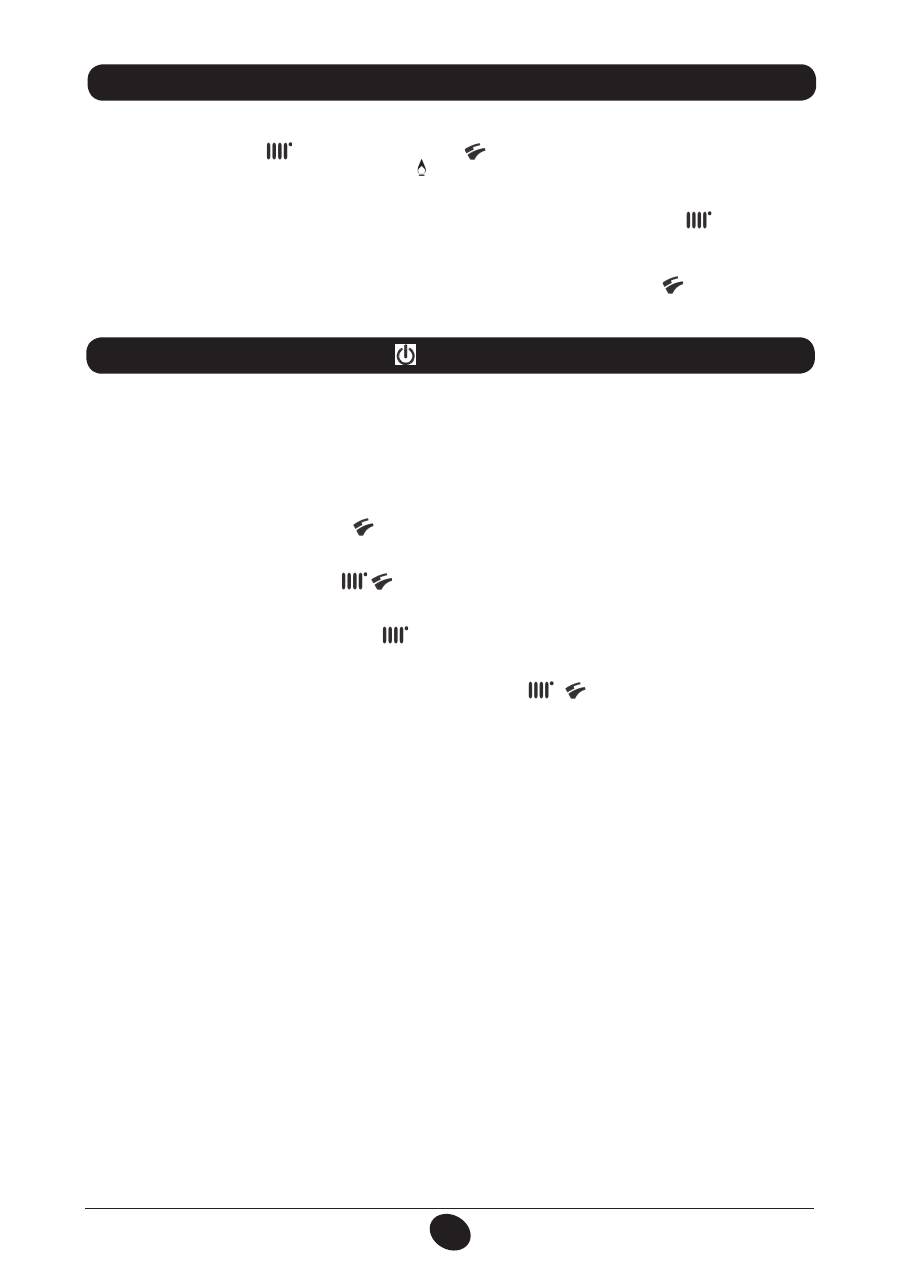
71
71.03982.03 - EN
OPERATING INSTRUCTIONS
4. ADJUSTING ROOM TEMPERATURE AND DHW TEMPERATURE
The system must be fitted with a room thermostat for controlling indoor temperature.
Adjust the room temperature (
) and the DHW temperature (
) by pressing the respective
+/-
(figure 1). The ignition
of the burner is shown on the display with the symbol ( ) as described in section 3.
HEATING
While the boiler is operating in the heating mode, the display (figure 1) shows the flashing symbol (
) and the heating
delivery temperature (°C).
DOMESTIC HOT WATER
While the boiler is operating in the DHW mode, the display (figure 1) shows the flashing symbol (
) and the DHW output
temperature (°C).
Press this button to set the following operating modes:
• SUMMER
• WINTER
• HEATING ONLY
• OFF
In the
SUMMER
mode, the display shows (
). The boiler satisfies requests for DHW only while central heating is NOT
enabled (ambient frost protection function active).
In the
WINTER
mode, the display shows (
). The boiler satisfies requests for both DHW and central heating (am-
bient frost protection function active).
In the
HEATING ONLY
mode, the display shows (
). The boiler satisfies requests for central heating only (ambient frost
protection function active).
In the
OFF
mode, the display shows neither of the above two symbols (
) (
). In this mode, only the ambient frost
protection function is active while requests for DHW and central heating are not satisfied.
5. DESCRIPTION OF BUTTON (Summer - Winter - Heating only - Off)

72
71.03982.03 - EN
OPERATING INSTRUCTIONS
To turn off the boiler, disconnect the electric power supply. In “OFF” mode (section 5) the boiler remains off (the display
indicates OFF) though the electrical circuits remain live and the frost protection device is enabled (section 9).
7. TURNING OFF THE BOILER 8. GAS CONVERSION
The boilers can operate both on natural gas and
LPG
.
All gas conversions must be made by an authorised Service Engineer.
WARNING
Disconnect the boiler from the mains power supply using the two-pole switch.
IMPORTANT:
Regularly check that the pressure displayed on the pressure gauge is 0.7 - 1.5 bar, with the boiler cold.
In case of overpressure, open the boiler drain tap. In case of insufficient temperature, open the boiler filling tap (figure 3).
Open the tap very slowly in order to vent the air.
6. FILLING THE SYSTEM
The boiler is fitted with a hydraulic pressure gauge which prevents the boiler from working if there is no water.
N.B.:
In case pressure drops occur frequently, have the boiler checked by an authorised Service Engineer.
Figure 2
A -
System drain tap
B
– Pressure gauge
C
- System filling tap
(supplied as an accessory for models 24 FF - 24)
D
– Disconnector
CG_2262 / 1007_2901
24 MI FF - 24 MI
24 FF - 24
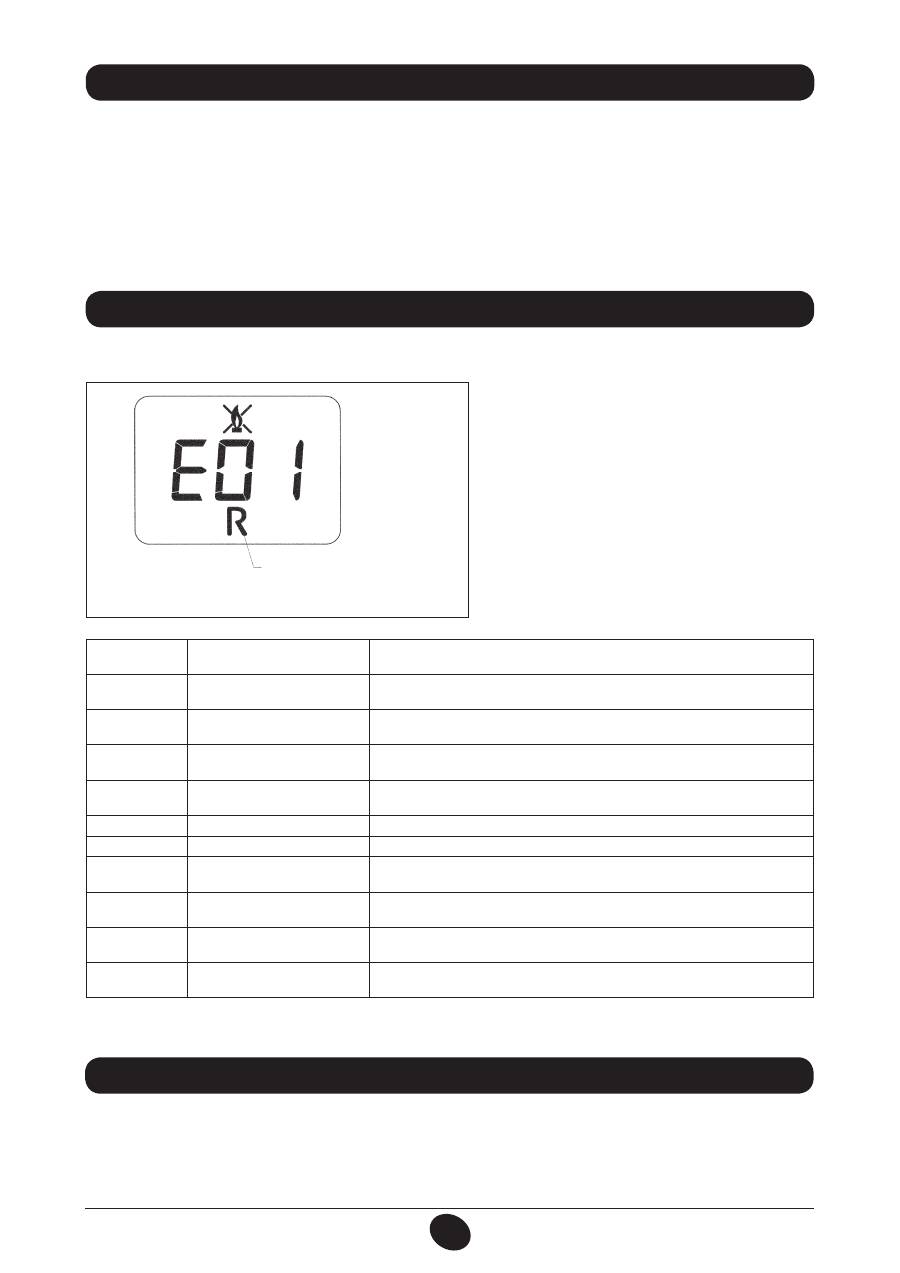
73
71.03982.03 - EN
OPERATING INSTRUCTIONS
10. TROUBLESHOOTING
Do not drain the whole system as filling up with water again causes unnecessary and harmful scale to build up inside the
boiler and the heating elements. If the boiler is not used during winter and is therefore exposed to the danger of frost, add
some specific anti-freeze to the water in the system (e.g.: propylene glycol coupled with corrosion and scale inhibitors).
The electronic boiler management system includes a “frost protection” function for the heating system which, when delivery
temperature falls below 5°C, operates the burner until a delivery temperature of 30°C is reached.
The frost protection function is enabled if:
* the boiler is electrically powered;
* the gas tap is open;
* the system is at the correct pressure;
* the boiler is not blocked.
9. PROLONGED SHUTDOWN. FROST PROTECTION
N.B.:
in case of a fault, the display backlighting flashes together with the error code.
To keep the boiler efficient and safe, have it checked by the authorised Service Centre at the end of every operating period.
Careful servicing ensures economical operation of the system.
Do not clean the outer casing of the appliance with abrasive, aggressive and/or easily flammable cleaners (e.g.: petrol,
alcohol, and so on). Always switch off the appliance before cleaning it (see section 7 Switching off the boiler).
11. ROUTINE MAINTENANCE INSTRUCTIONS
Faults are shown on the display with an error code (e.g.: E 01):
CODE
DISPLAYED
FAULT
CORRECTIVE ACTION
E01
Failed ignition shutdown
Press and hold down “
R
” for at least 2 seconds. If this fault persists, call the
Authorised Service Centre.
E02
Safety thermostat tripped
Press and hold down “
R
” for at least 2 seconds. If this fault persists, call the
Authorised Service Centre.
E03
Flue thermostat/ flue pressure
switch tripped
Call the Authorised Service Centre.
E04
Shutdown after 6 consecutive
flame losses
Press and hold down “
R
” for at least 2 seconds. If this fault persists, call the
Authorised Service Centre.
E05
Flow sensor failure
Call the Authorised Service Centre.
E06
DHW sensor fault
Call the Authorised Service Centre.
E10
Hydraulic pressure switch
block
Check that the pressure in the system is correct; See section 6. If this fault
persists, call the Authorised Service Centre.
E25/E26
Probable blocked pump safety
trip
Call the Authorised Service Centre.
E35
Parasite flame (flame error)
Press and hold down “
R
” for at least 2 seconds. If this fault persists, call the
Authorised Service Centre.
E96
Switching off due to reductions
in power supply
RESET is automatic. If this fault persists, call the Authorised Service Centre
To RESET the boiler, press and hold down “R” for at
least 2 seconds. If this fault persists, call the Authorised
Service Centre.
N.B.:
5 reset attempts can be performed after which
the boiler shuts down. To reset again, switch off the
boiler for a few seconds.
Figure 3
0607_1205
RESETTABLE
faults
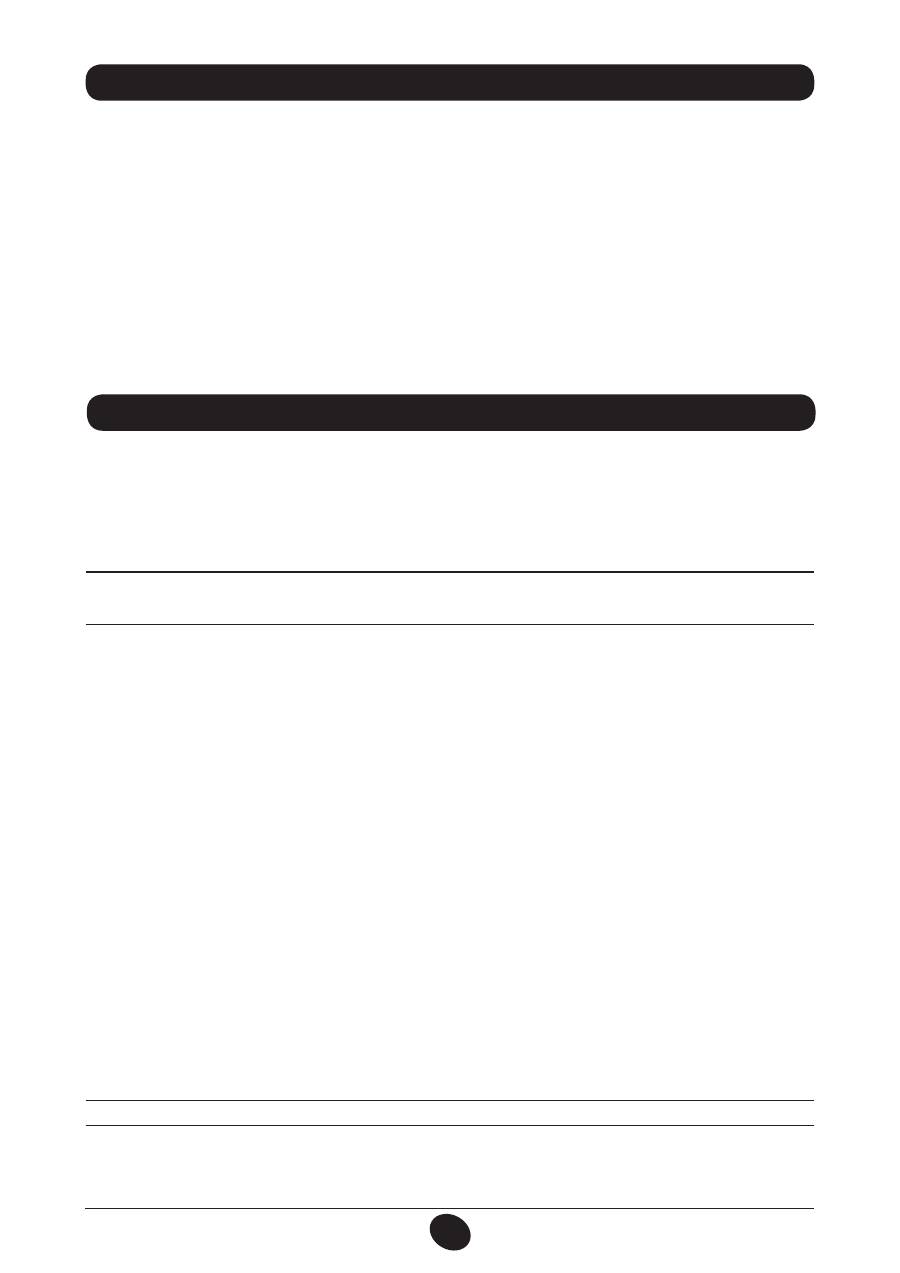
74
71.03982.03 - EN
INSTALLATION INSTRUCTIONS
This boiler has been designed to heat water to a temperature lower than boiling point at atmospheric pressure.
It must be connected to a central heating system and to a domestic hot water supply system according to its performance
and power output.
Do the following before connecting the boiler:
a) Make sure that the boiler is adjusted to use the type of gas delivered by the gas supply. To do this, check the markings
on the packaging and the rating plate on the appliance.
b) Make sure that the flue terminal draft is appropriate, that the terminal is not obstructed and that no exhaust gases
from other appliances are expelled through the same flue duct, unless the latter has been specially designed to collect
exhaust gas from more than one appliance, in compliance with current laws and regulations.
c) Make sure that, if the boiler is connected to existing flue ducts, these have been thoroughly cleaned as residual products
of combustion may detach from the walls during operation and obstruct the flow of fumes.
To ensure correct operation and maintain the warranty, observe the following precautions:
1. DHW circuit:
1.1.
If the water is harder than 20 °F (1 °F = 10 mg calcium carbonate per litre of water), install a polyphosphate dispenser
or an equivalent treatment system, compliant with current regulations.
1.2.
Thoroughly flush the system after installation of the appliance and before use.
1.3.
The materials used for the product’s DHW circuit comply with Directive 98/83/CE.
2. Heating circuit
2.1. new system
Before proceeding with installation of the boiler, the system must be cleaned and flushed to eliminate residual
thread-cutting swarf, solder and any solvents, using suitable proprietary products. To avoid damaging metal, plastic
and rubber parts, only use neutral cleaners, i.e. non-acid and non alkaline. Recommended cleaning products are:
SENTINEL X300 or X400 and FERNOX Regenerator for heating circuits. Use these products in strict compliance
with the manufacturers’ instructions.
2.2. existing system:
Before installing the boiler, drain the system and clean it to remove sludge and contaminants, using suitable
proprietary products as described in section 2.1.
To avoid damaging metal, plastic and rubber parts, use only neutral cleaners, i.e. non-acid and non-alkaline such
as SENTINEL X100 and FERNOX Protector for heating circuits. Use these products in strict compliance with the
manufacturers’ instructions.
Remember that the presence of foreign bodies in the heating system can adversely affect boiler operation (e.g.
overheating and excessive noise of the heat exchanger).
Failure to observe the above will render the warranty null and void
.
The following notes and instructions are addressed to fitters to allow them to carry out trouble-free installation. Instructions
for igniting and using the boiler are contained in the ‘Instructions for Users’ section.
• This boiler can be connected to any type of double- or single-pipe convector plate, radiator or thermoconvector. Design
the system sections as usual, though, bearing in mind the available flow-head at the plate, as shown in section 25.
• Do not leave any packaging (plastic bags, polystyrene, etc.) within reach of children, as it is a potential source of danger.
• Initial lighting of the boiler must be carried out by an authorised Service Engineer, as indicated on the attached sheet.
Failure to observe the above will render the guarantee null and void.
ADDITIONAL PUMP WARNING
If an additional pump is used on the heating system, position it on the boiler return circuit. This will allow the correct
operation of the water pressure switch.
SOLAR WARNING
if the instantaneous (mixed) boiler is connected to a system with solar panels, the maximum temperature of the domestic
hot water entering the boiler must not exceed
60°C
.
12. GENERAL INFORMATION 13. INSTRUCTIONS PRIOR TO INSTALLATION
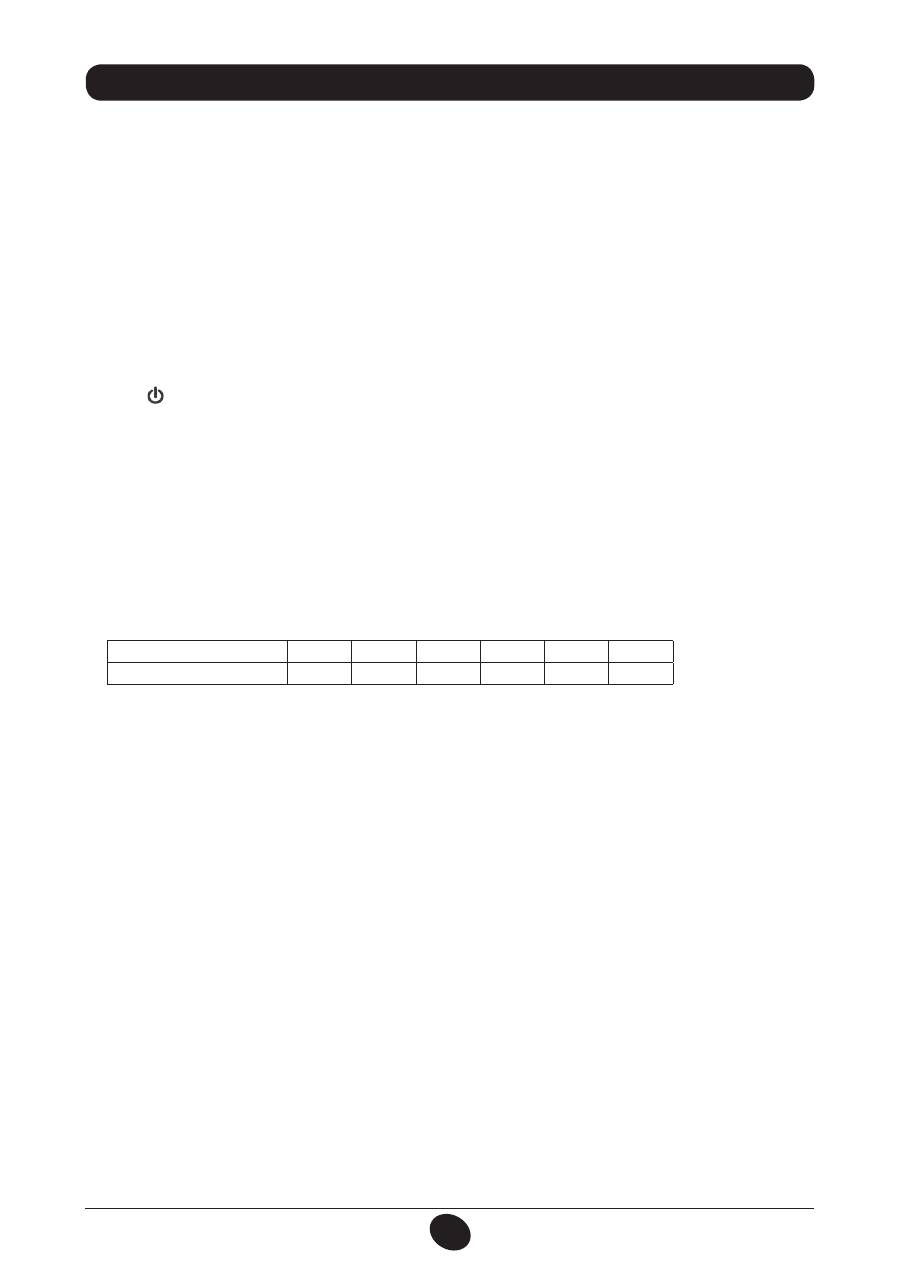
75
71.03982.03 - EN
INSTALLATION INSTRUCTIONS
13. INSTALLAZIONE DELLA CALDAIA 14. INSTALLING THE BOILER
After deciding the exact location of the boiler, make sure there is sufficient room to perform maintenance operations (at
least 450 mm of headroom is required in order to replace the expansion vessel).
Connect the system to the gas and water inlets present on the lower bar of the template. Fit two G3/4 taps (flow and
return) on the central heating circuit; these taps make it possible to carry out important operations on the system without
draining it completely. If you are either installing the boiler on an existing system or replacing one, as well as the above,
fit a settling tank under the boiler on the system return line in order to collect any deposits and scale circulating in the
system after flushing. After fixing the boiler to the template, connect the flue and air ducts, supplied as accessories, as
described in the following sections.
If the model
24 MI - 24
natural draught boiler is installed, connected it to the flue with a metal pipe resistant to normal
mechanical stress, heat, products of combustion and relative condensate.
IMPORTANT
After filling the boiler, vent the entire internal circuit and the system as follows:
• close the gas on-off valve;
• power the boiler.
• open the vent valve on the pump body;
• press (
) to set the boiler in the “WINTER” operating mode;
• send a heat demand from the room thermostat;
• open a hot water tap to alternate CH demand with DHW demand;
• after a few ignition attempts the boiler will shut down (error E01 appears on the display);
• to rest, press and hold down “
R
” for at least 2 seconds;
• repeat the procedure at least another two times;
• close the vent valve.
After venting the boiler circuit, proceed with initial lighting.
EXPANSION VESSEL
The boiler features a standard 6-litre expansion vessel with a pre-charge pressure of 1 bar. The maximum volume of water in
the system is calculated according to hydrostatic pressure at an average water temperature of 80°C (flow: 95°C return: 75°C).
Hydrostatic pressure (m)
5
6
7
8
9
10
Maximum system volume (l)
110
105
95
85
77
70
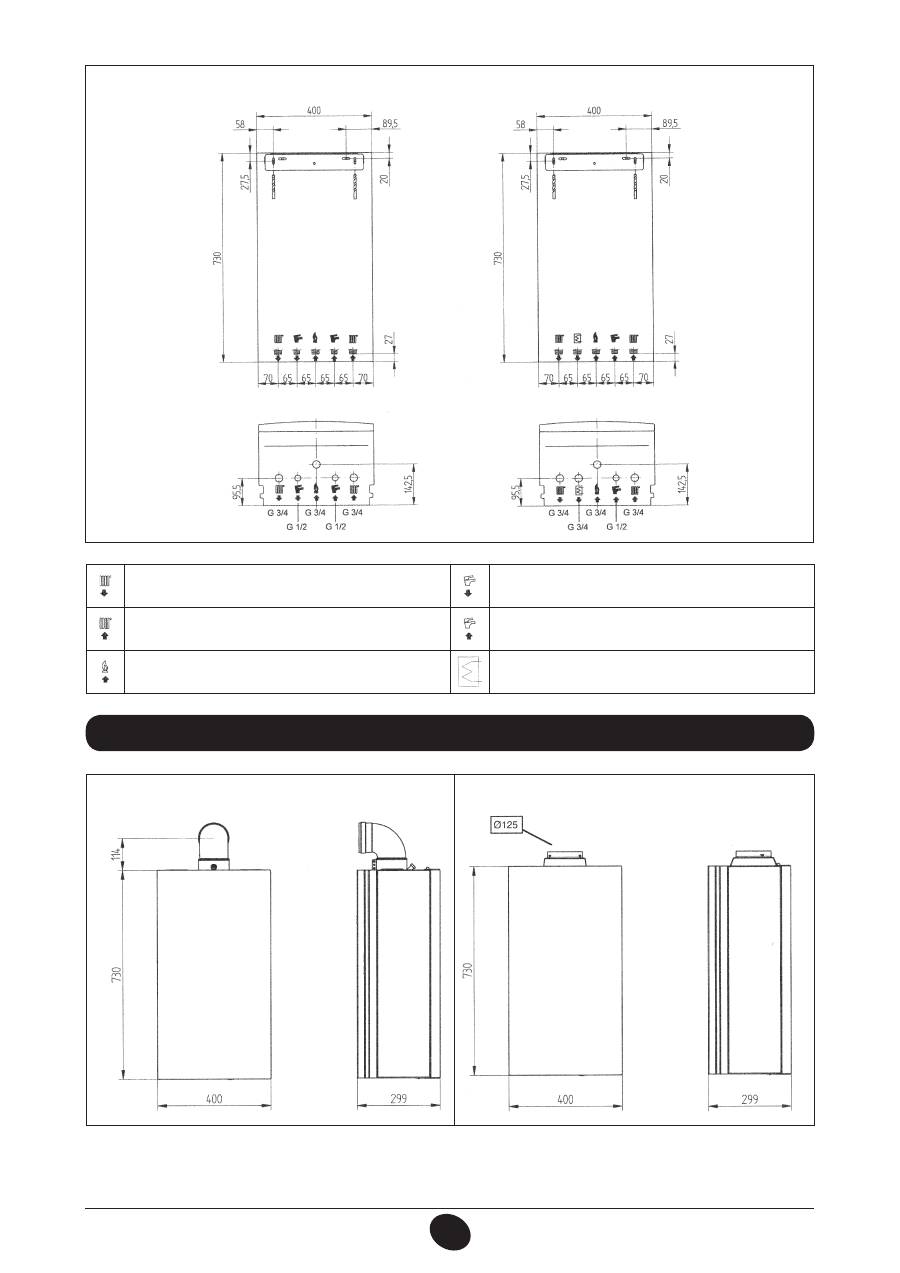
76
71.03982.03 - EN
INSTALLATION INSTRUCTIONS
14. DIMENSIONI CALDAIA 15. DIMENSIONS OF BOILER
Figure 5
24 FF - 24 MI FF
24 - 24 MI
CG_2009 / 1006_1802
CG_2009 / 1006_1803
G”3/4 HEATING FLOW
G”1/2 DOMESTIC HOT WATER OUTLET
G”3/4 HEATING RETURN
G”1/2 DOMESTIC COLD WATER INLET
G”3/4 GAS INLET TO BOILER
G”3/4 STORAGE BOILER COIL FLOW
WARNING
Tighten the boiler nipple water connections with care (maximum tightening torque 30 Nm).
Figure 4
24 MI - 24 MI FF
24 - 24 FF
CG_2263 / 1007_1403

77
71.03982.03 - EN
INSTALLATION INSTRUCTIONS
16. INSTALLING THE FLUE AND AIR DUCTS
Model 24 MI FF - 24 FF
The boiler is easy and flexible to install thanks to the ex-
tensive range of available accessories, as described below.
The boiler has been designed for connection to a vertical
or horizontal coaxial flue-air duct. A splitting kit is also
available if separate ducts are required.
Only accessories supplied by the manufacturer must
be used for installation!
WARNING: To optimise operating safety, make sure
the flue ducts are firmly fixed to the wall with suitable
brackets.
Figure 6
0503_0905/CG1638
… COAXIAL FLUE-AIR DUCT (CONCENTRIC)
This type of duct is used to discharge exhaust fumes and draw combustion air both outside the building and if a LAS flue
is fitted.
The 90° coaxial curve allows the boiler to be connected to a flue-air duct in any direction as it can be rotated by 360°. It
can also be used as a supplementary curve combined with a coaxial duct or a 45° curve.
If fumes are discharged outside the building, the flue-air duct
must protrude at least 18 mm from the wall to allow an alu-
minium weathering surround to be fitted and sealed to avoid
water infiltrations.
Make sure there is a minimum upward slope towards the
outside of 1 cm per metre of duct.
•
A 90° curve reduces total duct length by 1 metre.
•
A 45° curve reduces total duct length by 0.5 metres.
The first 90° curve is not considered when calculating the
maximum available length.
Figure 7
0805_2901 / C
G_2073
Connector
Boiler model
Length (m)
Use of DIAPHRAGM
on INLET LINE
A
24 MI FF
24 FF
0 ÷ 1
Yes
1 ÷ 4
No

78
71.03982.03 - EN
INSTALLATION INSTRUCTIONS
16.1 HORIZONTAL FLUE INSTALLATION EXAMPLES
16.2 LAS FLUE DUCT INSTALLATION EXAMPLES C42 TYPE
16.3 VERTICAL FLUE INSTALLATION EXAMPLES
This type of installation can be carried out on either a flat or a pitched roof by fitting a flue terminal and a special weathering
surround with sleeve (both available on request).
0503_0908/CG1641
0503_0907/CG1640
0512_2001
For detailed installation instructions, consult the technical data provided with the accessories.
L max = 9 m (Ø 80/125 mm)
L max = 4 m (Ø 60/100 mm)
10 m (Ø 80/125 mm)
L max = 4 m (Ø 60/100 mm)
10 m (Ø 80/125 mm)
L max = 4 m (Ø 60/100 mm)
10 m (Ø 80/125 mm)
L max = 3 m (Ø 60/100 mm)
9 m (Ø 80/125 mm)
L max = 3 m (Ø 60/100 mm)
9 m (Ø 80/125 mm)
L max = 7 m (Ø 80/125 mm)
L max = 8 m (Ø 80/125 mm)

79
71.03982.03 - EN
INSTALLATION INSTRUCTIONS
… SEPARATE FLUE AND AIR DUCTS
This type of installation makes it possible to discharge exhaust fumes both outside the building and into single flue ducts.
Comburent air can be drawn in at a different location from that of the flue terminal. The splitting kit comprises a flue duct
adaptor (100/80) and an air duct adaptor. For the air duct adaptor, fit the screws and seals previously removed from the cap.
The 90° curve allows the boiler to be connected to a flue-air duct in any direction as it can be rotated by 360°. It can also
be used as a supplementary curve combined with a duct or a 45° curve.
• A 90° curve reduces total duct length by 0.5 metres.
• A 45° curve reduces total duct length by 0.25 metres.
The first 90° curve is not considered when calculating the maximum available length.
Boiler model
(L1+L2)
Position
of air regulator
CO
2
%
G20
G31
24 MI FF
24 FF
0 ÷ 4
1
7,2
8
4 ÷ 18
2
18 ÷ 30
3
Adjusting the air regulator for sepa-
rate flues
This regulator must be adjusted to
optimise combustion efficiency and
parameters.
After turning the air intake connecter,
which can be mounted both to the right
and the left of the exhaust flue duct,
suitably adjust the excess air according
to the total length of the combustion
exhaust and inlet flue ducts.
Turn this regulator anticlockwise to de-
crease the excess of comburent air and
vice-versa to increase it.
To fine tune, use a combustion product
analyser to measure the amount of CO
2
in the fumes at maximum heat capacity,
and, if a lower value is measured, gra-
dually adjust the air regulator until the
amount of CO
2
indicated in the following
table is measured.
To mount this device correctly, consult
the relative instructions
.
Figure 8
0809_0201 / CG_2045
Flue duct adaptor
Connector
Air intake restrictor
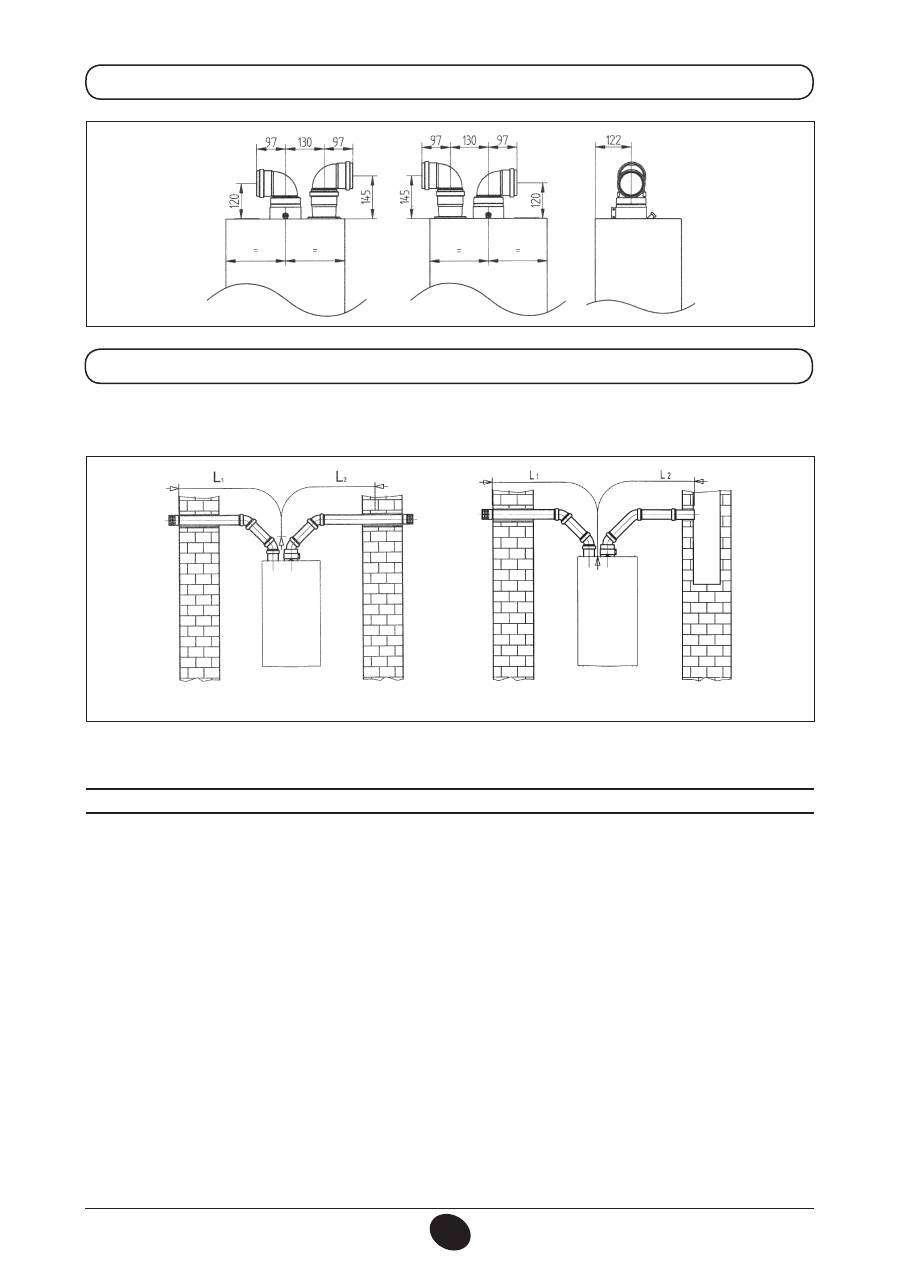
80
71.03982.03 - EN
INSTALLATION INSTRUCTIONS
16.5 HORIZONTAL SEPARATE FLUE INSTALLATION EXAMPLES - C82
IMPORTANT
-
Make sure there is a minimum downward slope towards the outside of 1 cm per metre of duct length.
In the event of installation of the condensate collection kit, the angle of the drain duct must be directed towards the boiler.
N.B.:
For the C52 type, do not fit the flue and air duct terminals on opposite walls of the building.
The inlet flue must have a maximum length of 10 metres for C52 fumes outlets.
If the discharge duct is longer than 6 metres, install the condensate collection kit, supplied as an accessory, near the boiler
16.4 DIMENSIONS OF SEPARATE OUTLETS
CG_2124 / 0905_2305
L max = 10 m
(L1 + L2) max = 30 m
1010_0102/CG1643
CG_1643_FR / 1010_0101
IMPORTANT:
if fitting a single flue duct, make sure it is adequately insulated (e.g.: with glass wool) wherever the duct
passes through building walls. For detailed installation instructions, consult the technical data provided with the accessories.

